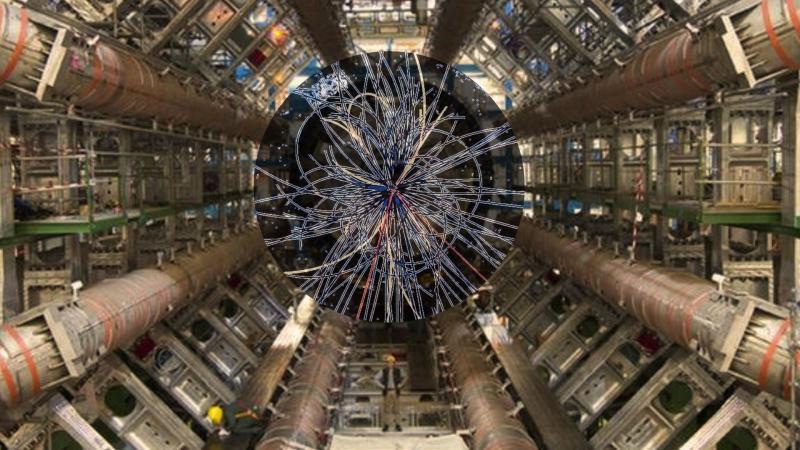
CERN Scientists Shedding Light on Antimatter & Universe’s Origins
The mysteries of the universe have long fascinated humans, and scientists at CERN’s Large Hadron Collider (LHC) are one step closer to unraveling the secrets of antimatter and the origins of the universe. Recently, the ALICE collaboration, a group of researchers working at the LHC, confirmed the first evidence of antihyperhelium-4, a rare and exotic form of antimatter. This breakthrough offers valuable insights into the fundamental forces of nature and the balance between matter and antimatter, shedding light on the early moments of the universe’s existence.
The Large Hadron Collider, located in Geneva, Switzerland, is a powerful particle accelerator that smashes protons together at incredibly high energies to create new particles and study their properties. The ALICE collaboration, one of the LHC’s many experiments, focuses on heavy-ion collisions, where scientists collide lead or gold ions to recreate the conditions that existed in the early universe.
Antimatter is a type of matter that has the same mass as regular matter but opposite electric charge. When antimatter comes into contact with regular matter, they annihilate each other, releasing a vast amount of energy in the process. The existence of antimatter is well-established, but its origins and behavior are still not fully understood.
The discovery of antihyperhelium-4, a type of antimatter that consists of two antiprotons and two antineutrons, is a significant breakthrough in the field of antimatter research. This exotic particle is extremely rare, and its presence in the early universe would have had a profound impact on the formation of matter as we know it today.
The ALICE collaboration’s discovery was made possible by the LHC’s incredible energies, which allow scientists to create and study particles that would not exist naturally. By colliding lead ions at incredibly high energies, the researchers were able to produce antihyperhelium-4 particles, which were then detected and analyzed using sophisticated detectors.
“This is a major milestone in the study of antimatter,” said Dr. Paolo Giubellino, spokesperson for the ALICE collaboration. “The discovery of antihyperhelium-4 confirms our understanding of the fundamental forces of nature and provides new insights into the balance between matter and antimatter in the early universe.”
The discovery of antihyperhelium-4 also offers valuable insights into the mechanisms that governed the universe’s early moments. In the first fraction of a second after the Big Bang, the universe was a hot and dense plasma, and the laws of physics that govern our universe today were still being written. The presence of antimatter in this early universe would have played a crucial role in shaping the formation of matter and the structure of the universe as we know it today.
The ALICE collaboration’s discovery is just the latest in a series of breakthroughs made possible by the LHC. In 2012, scientists detected the Higgs boson, a fundamental particle that explains how particles acquire mass. More recently, the ATLAS and CMS experiments detected gravitational waves, ripples in the fabric of spacetime that were predicted by Einstein’s theory of general relativity.
The search for antimatter and the study of its properties is an active area of research at CERN, with scientists working to understand the fundamental forces of nature and the balance between matter and antimatter. The discovery of antihyperhelium-4 is a significant step forward in this research, and it offers new opportunities for scientists to study the properties of antimatter and its interactions with regular matter.
As scientists continue to study the properties of antimatter, they are also working to develop new technologies that can manipulate and control antimatter. This research has the potential to lead to breakthroughs in fields such as medicine, energy, and materials science.
In conclusion, the discovery of antihyperhelium-4 by the ALICE collaboration at CERN’s Large Hadron Collider is a significant breakthrough in the study of antimatter and the origins of the universe. This exotic particle offers valuable insights into the fundamental forces of nature and the balance between matter and antimatter, shedding light on the early moments of the universe’s existence. As scientists continue to study the properties of antimatter, they are one step closer to unraveling the mysteries of the universe and unlocking new technologies that can benefit humanity.
Source: https://researchmatters.in/news/exotic-antimatter-spotted-heavy-ion-collisions-lhc






